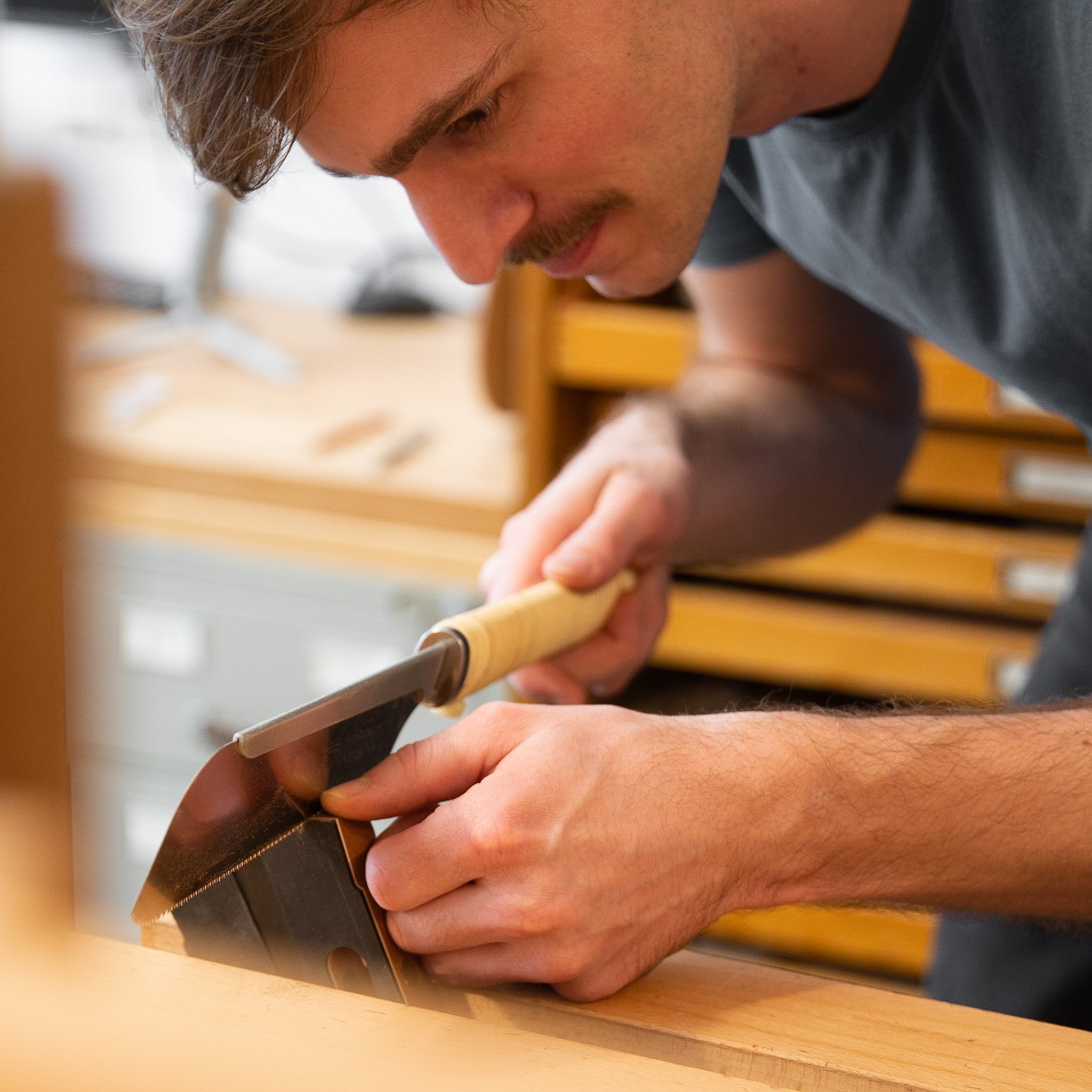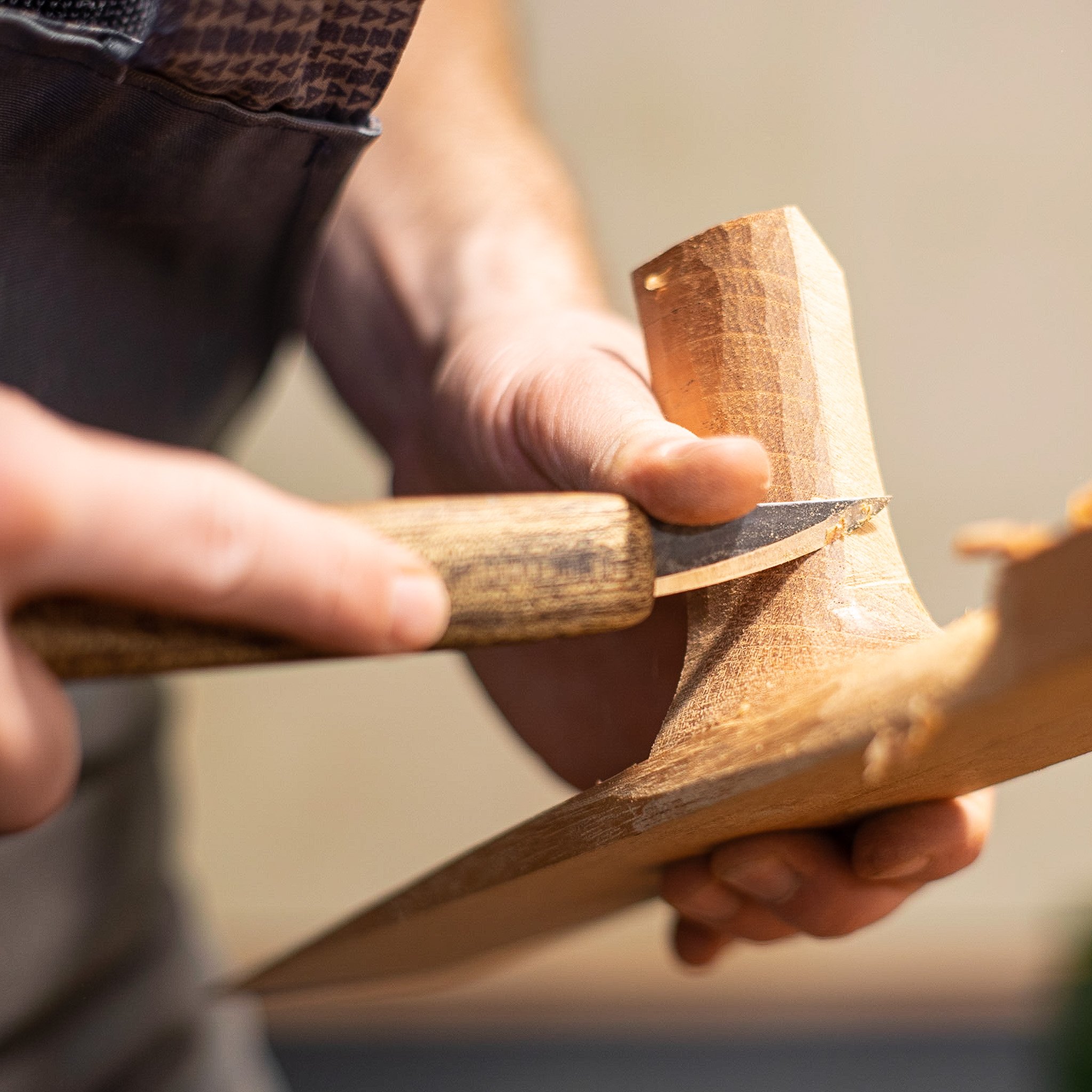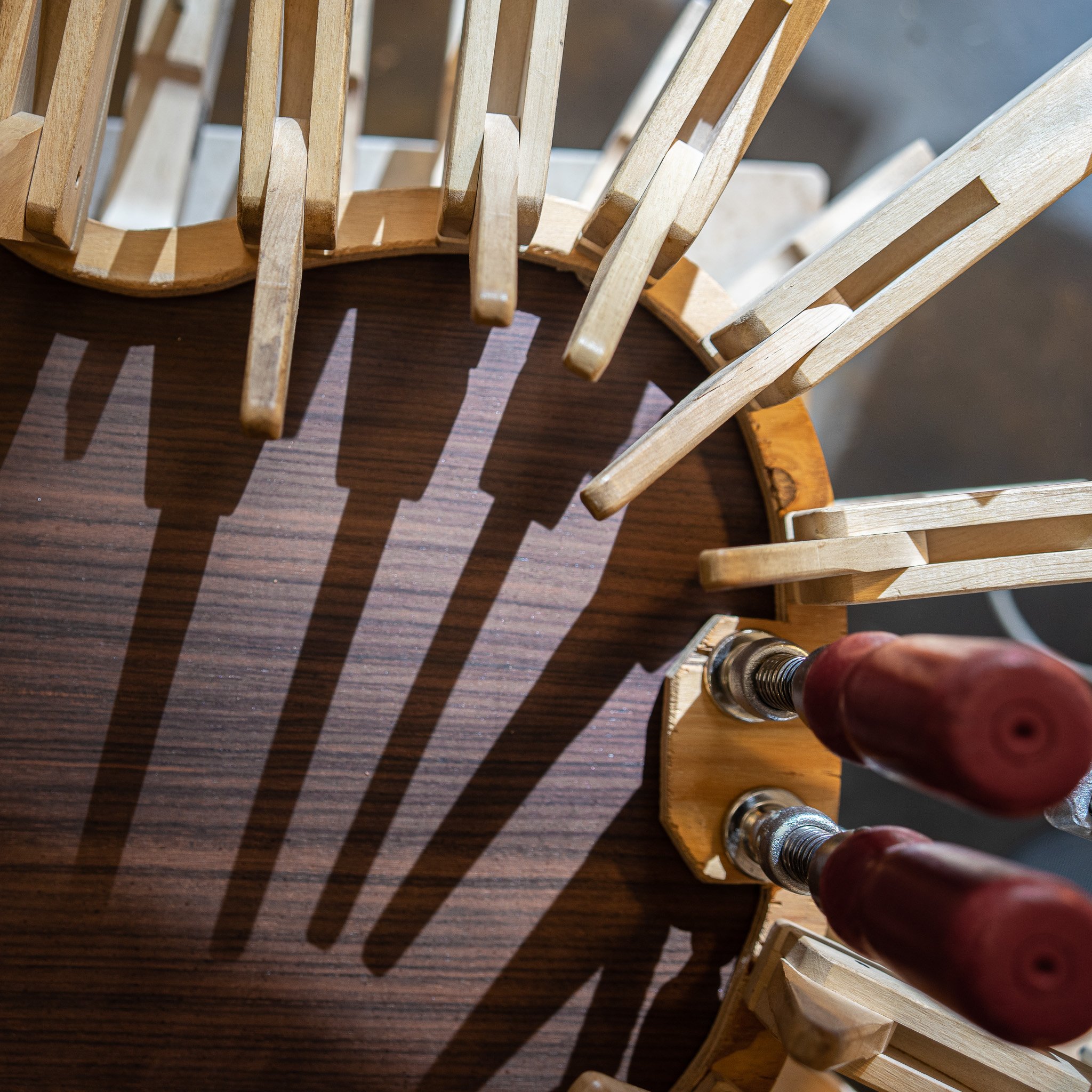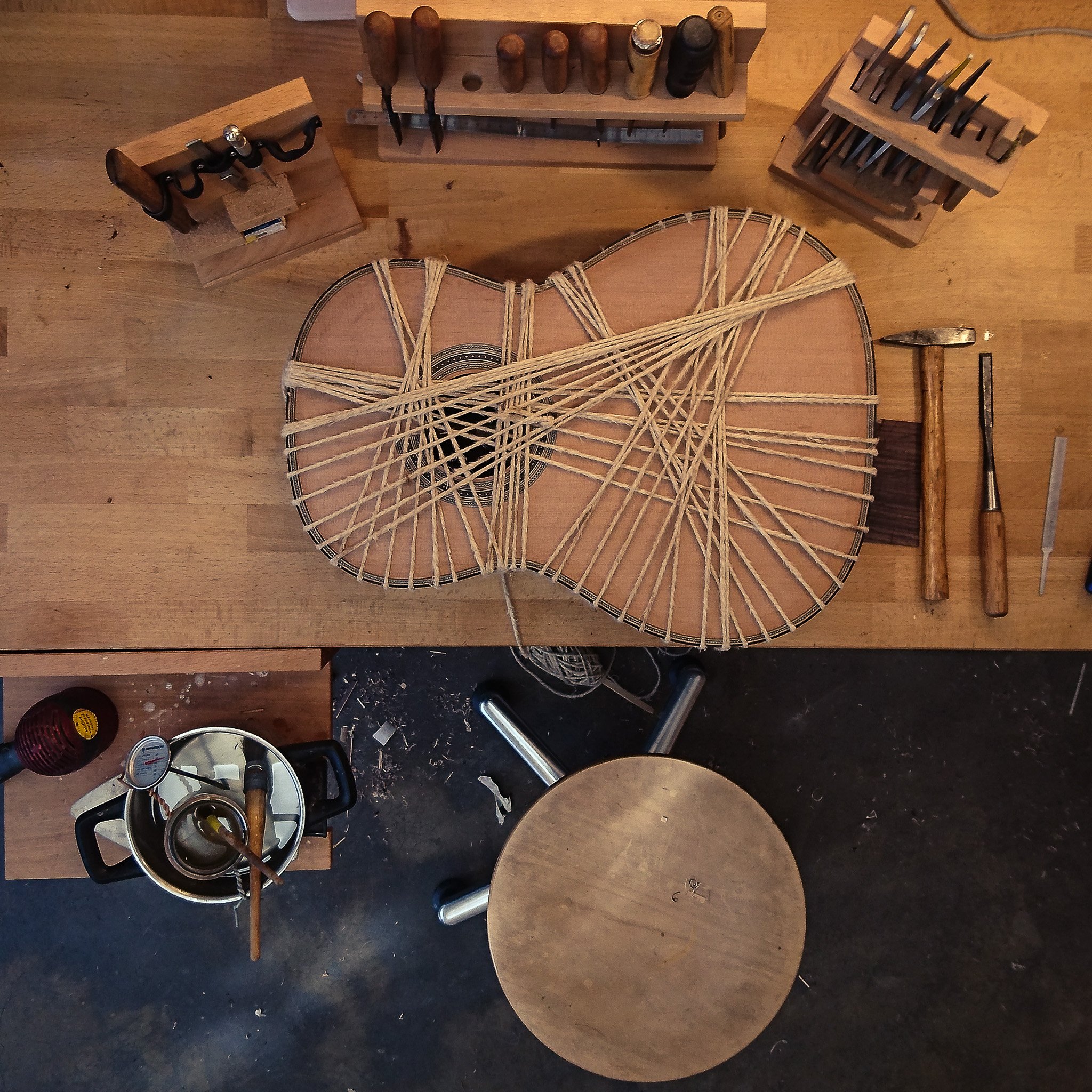
Ideally suited for chamber music and large halls, my Groove Top guitars are aimed at people who make music professionally, study guitar or are ambitious amateurs.
The light and vibrant soundboard produces a powerful tone, with a fast response, singing treble and fundamental bass.
In order to achieve these properties, I adopt ideas from double-top and lattice construction methods. The top is braced with a thin cedar lattice and due to special groove structures is very light and vibrant. These groove structures are open to the inside of the guitar and not enclosed by a second top as in double-top construction. Inside the guitar you can see the grooves between the bracing. I have been using this groove top construction in variations since 2014. It significantly shapes the sound of my guitars. In 2016 my guitar with groove top construction was awarded the German Musical Instrument Prize. The jury was impressed by the great dynamism, the precise and immediate response and its extraordinary balance.
Groove Top Guitars Adrian Heinzelmann
-
As top material I use spruce or cedar. In summary, one could say that the spruce guitars sound a little more brilliant, with better separation and containing many timbres, while the cedar instruments have a slightly stronger, warmer and darker sound.
-
The rosette and the purfling is reminiscent of the Spanish luthier Francisco Simplicio (1874 - 1932). I refined the manufacturing process and the choice of materials in many hours of work.
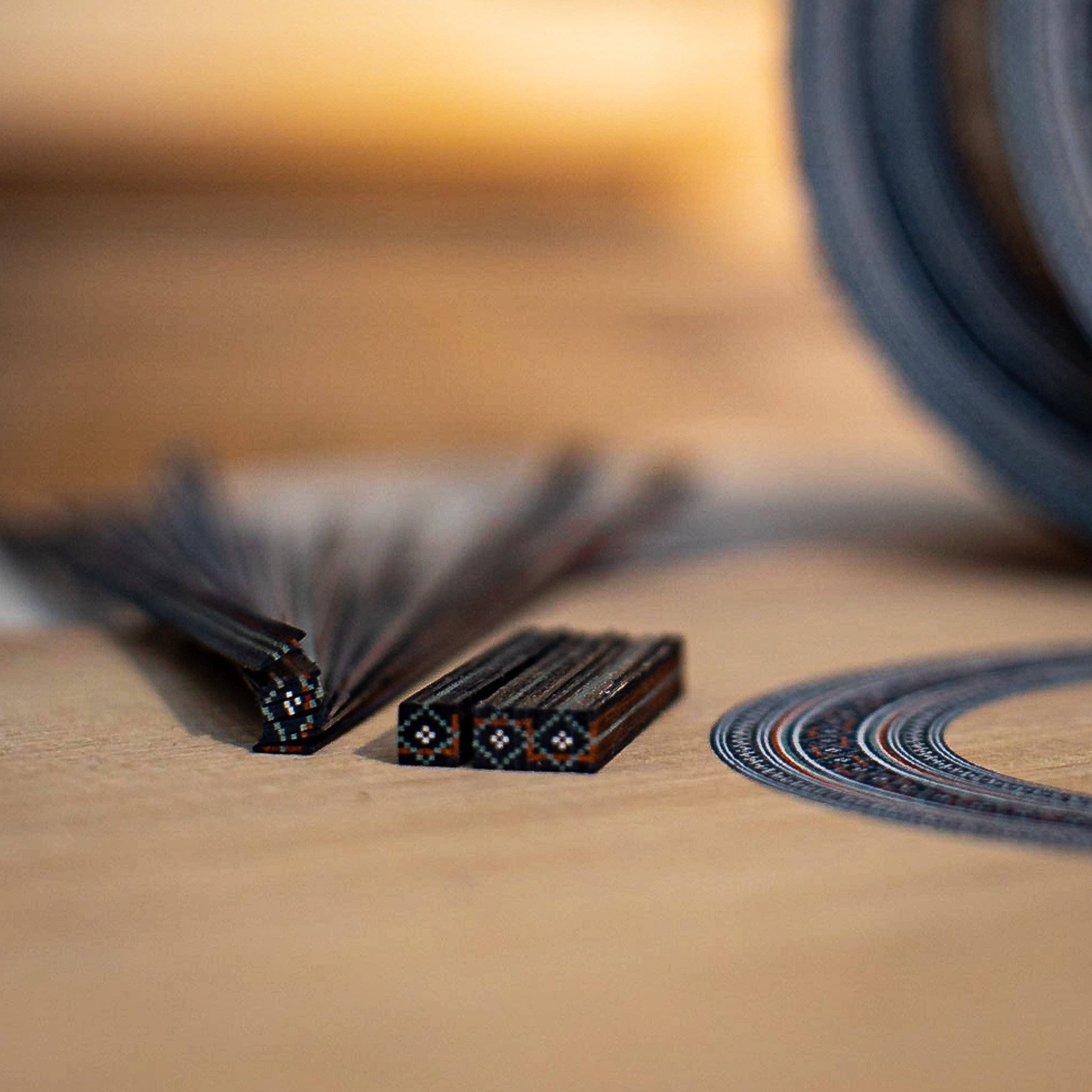

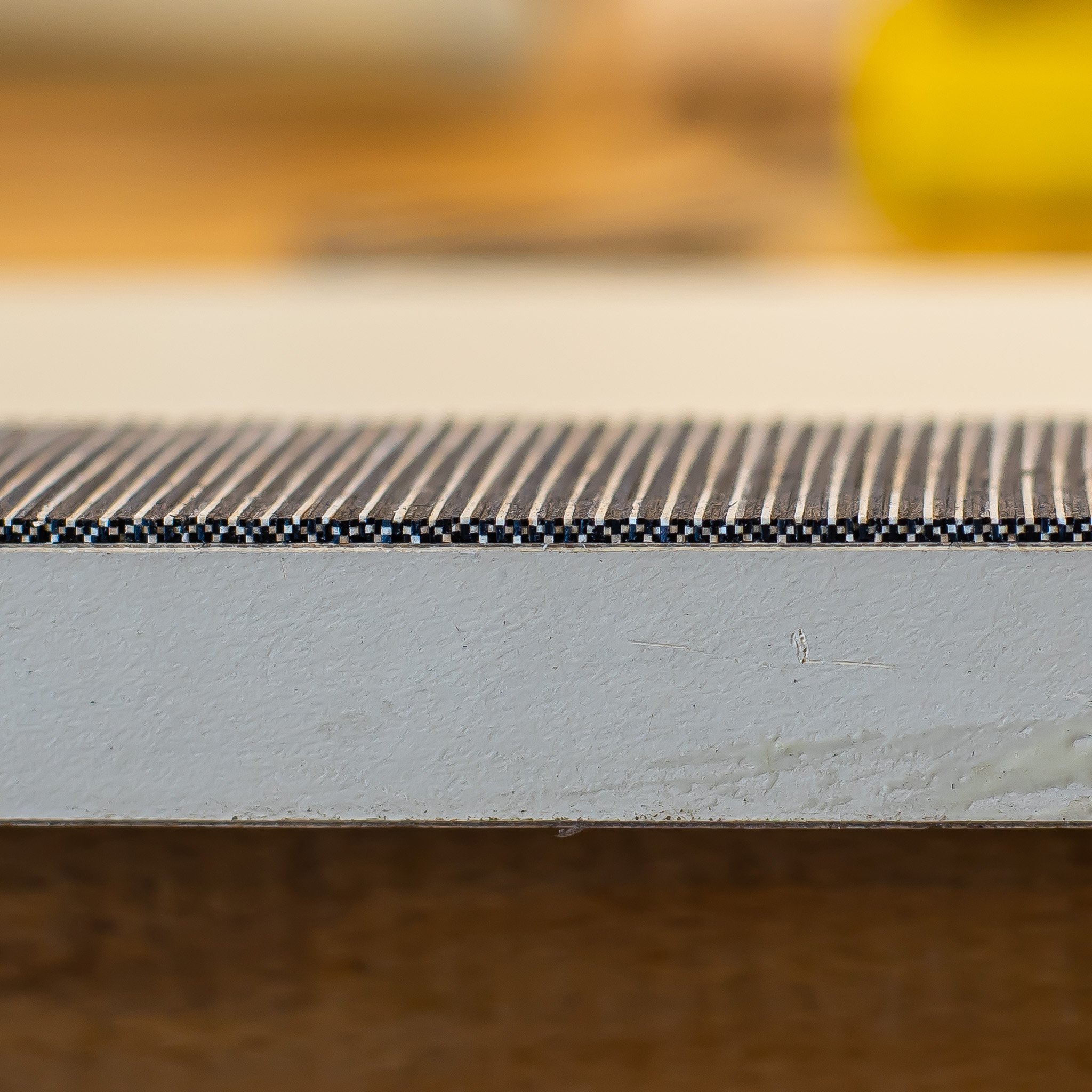
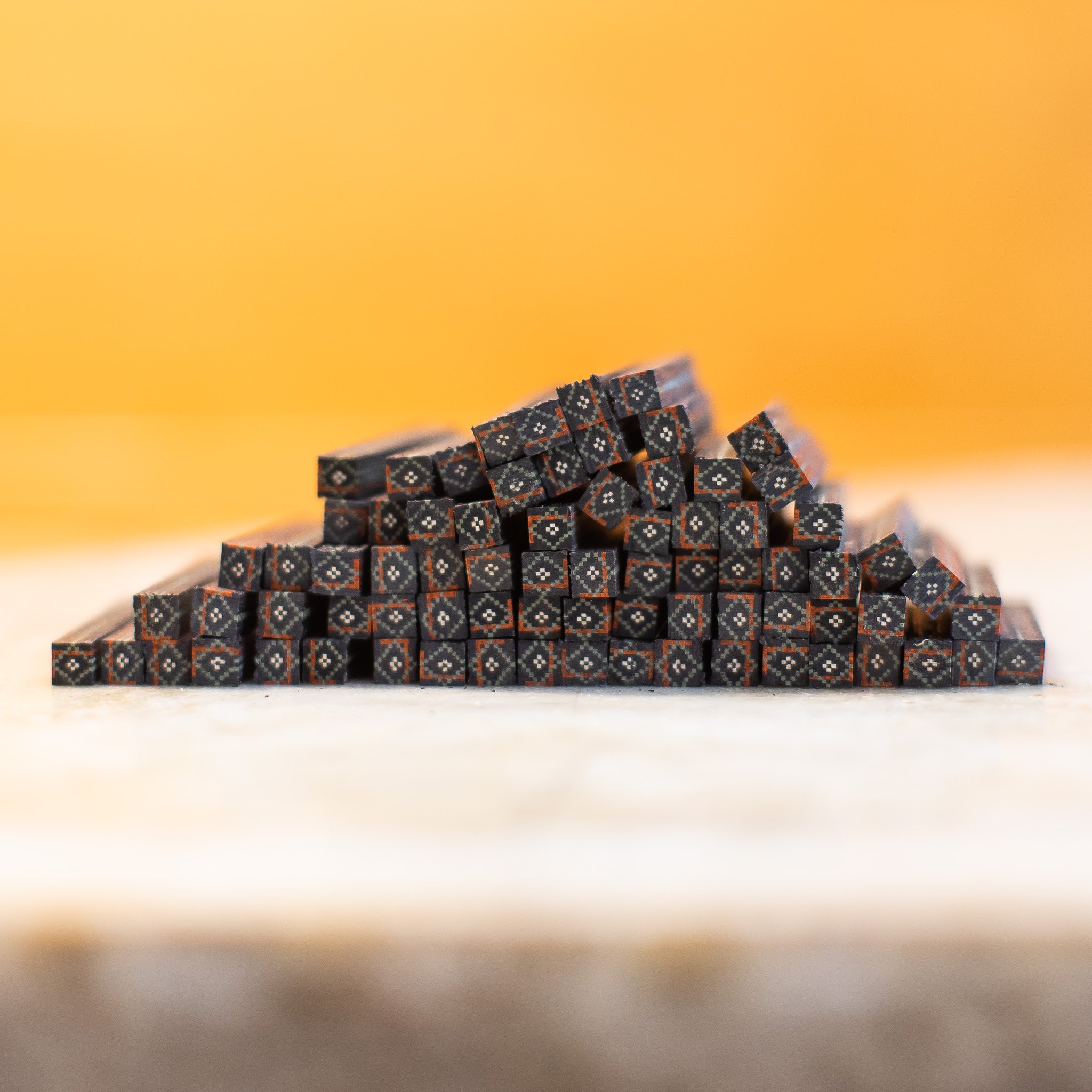

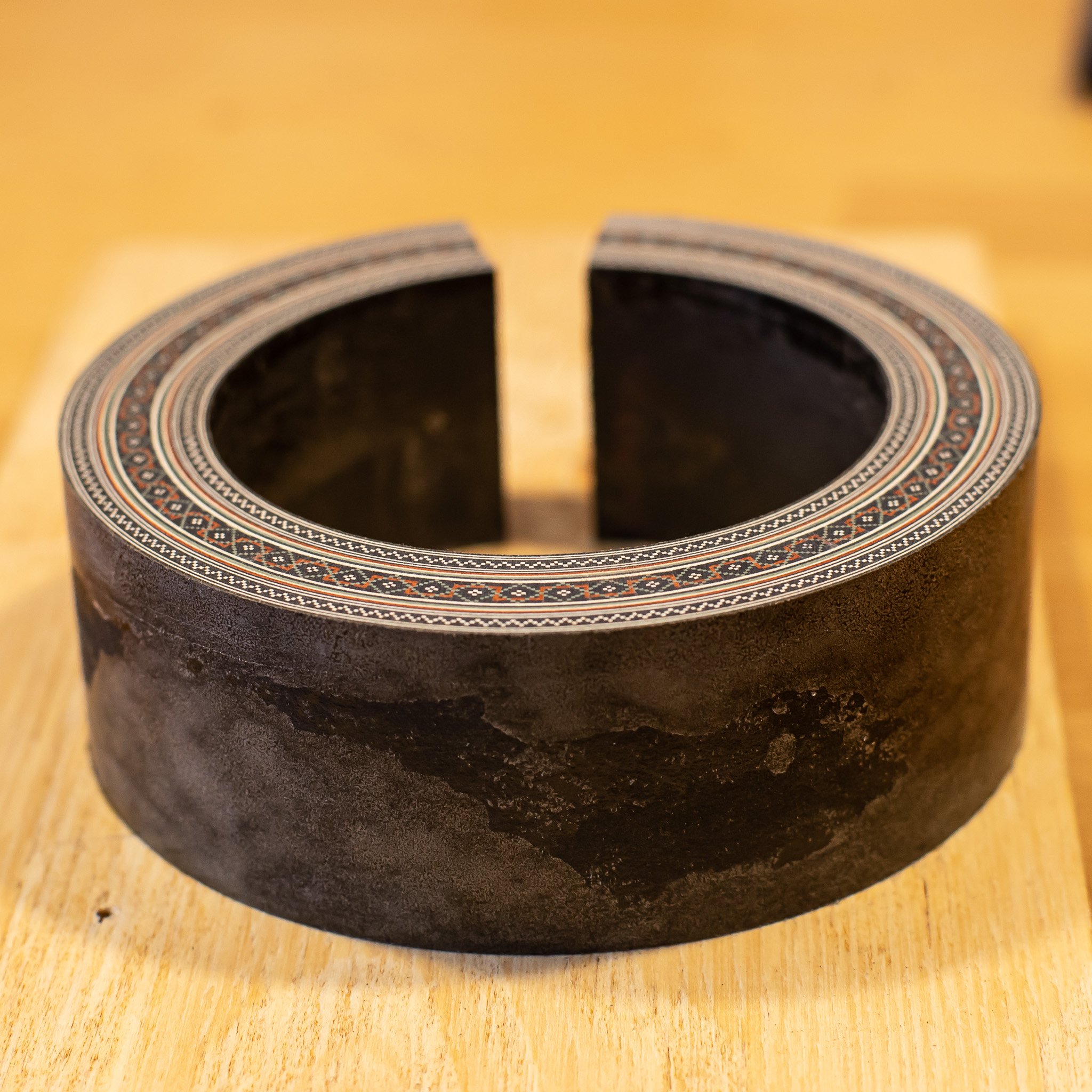
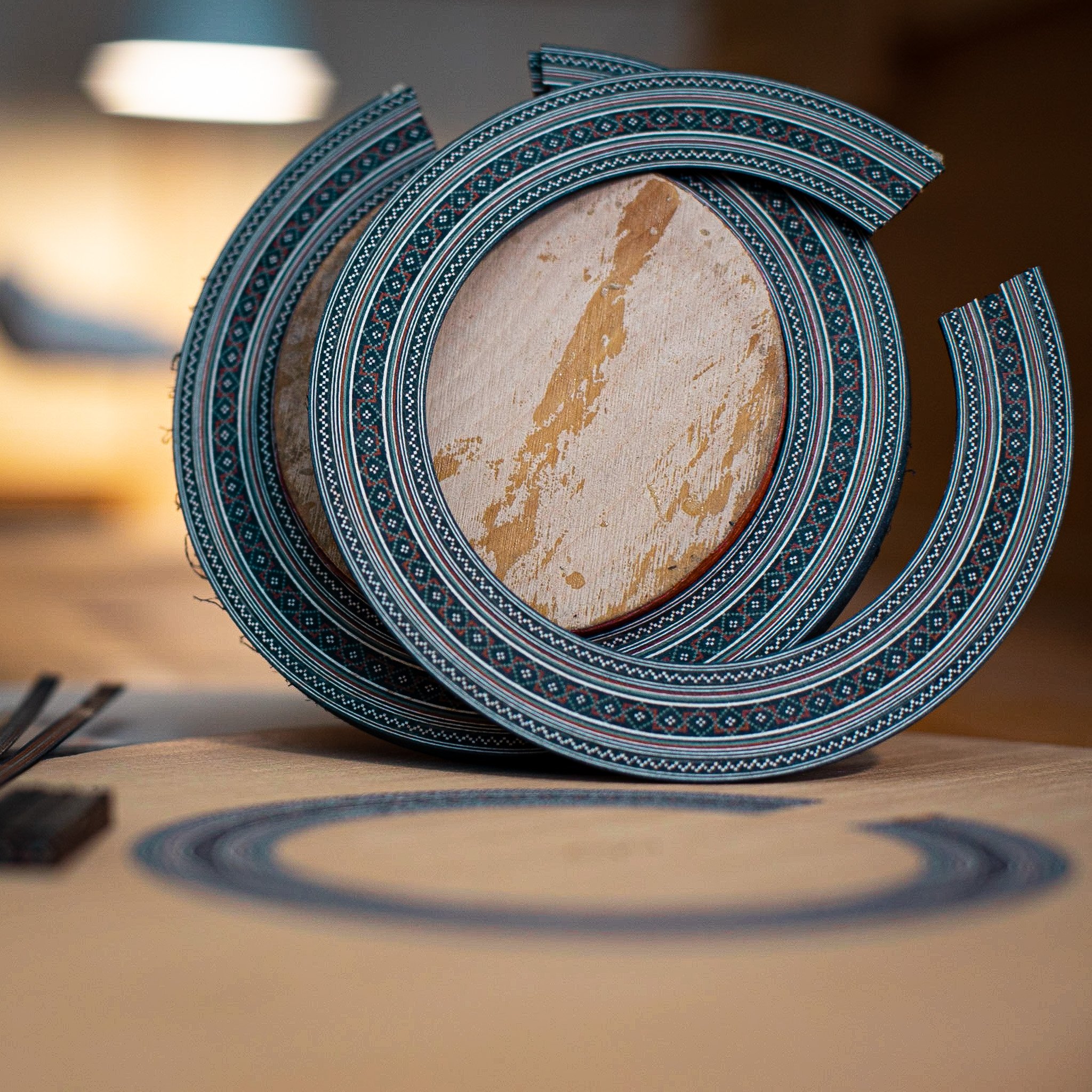




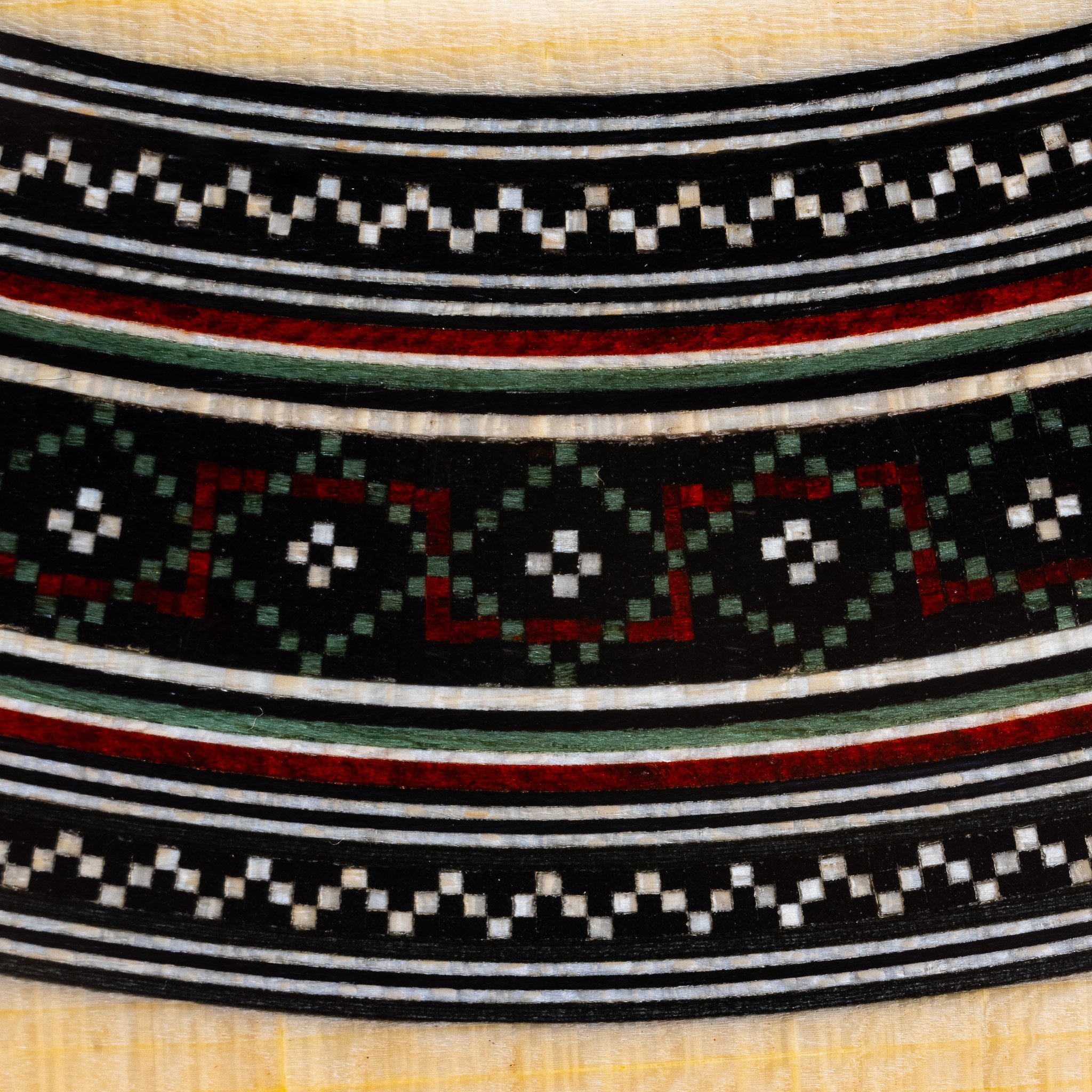




Body
The following woods are available for the body:
Indian rosewood
Madagascar rosewood
Cocobolo
Santos rosewood
Maple
Because of the properties of the woods used for the back and sides, and because of the way in which they are worked, the back and sides influence the way in which the soundboard vibrates, while not radiating much sound themselves. Thus, the influence of the back and side material on the sound of the guitar is significantly lower than that of the soundboard material. Nonetheless, I would describe the small differences between the species as follows:
Indian rosewood is more colorful and balanced. Madagascar rosewood, Cocobolo and Santos rosewood give the bass a good foundation. Maple stands out through a radiant treble.
Indian rosewood back
Madagascar rosewood back
Indian rosewood back
Neck and scale length
The neck and head of my instruments are made of Cedro, which has a high rigidity while still being relatively light, so that the instruments do not become unbalanced by an overly heavy neck. Fingerboard and headstock are made of ebony.
By default, I use a fingerboard width of 52 mm on the saddle to 62 mm on the 12th fret in combination with a scale length of 650 mm. I also adapt the action of the strings individually to your playing style and needs.
Lacquering
The soundboard is always protected with a shellac polish. This is very thin and therefore has very good acoustic properties. For body and neck I also offer, in addition to the shellac polish, a PU lacquer. The PU coating has the advantage that it is more hard wearing.
»The guitar maker Adrian Heinzelmann is an absolute insider tip among the top guitar builders of the younger generation. With his innovative and creative ideas in modern guitar making, his guitars immediately inspired me. They not only convince with the highest level of workmanship and with a strong, balanced tone, but they also enchant with a fine and transparent sound and a light response.«
- Hubert Käppel, artist, lecturer and author
Sound examples
Detailed and comprehensive review of a Heinzelmann spruce guitar by Jouyan Tarzaban and Jonathan Singgih Panoto from Siccas Guitars
Sound example for a Heinzelmann cedar guitar.
Matei Rusu plays F. Moreno - Torroba : Sonatina - I. Allegretto. Video and recording by Jouyan Tarzaban
My way of working
By constantly questioning and rethinking my conception of the guitar, I gradually develop my instruments. In addition to the method of tapping and bending different components, I also use more precise measurements with which I document and check the construction of each guitar.
-
An elementary part of this is the recording and evaluation of different sound spectra, which can be created with a pulse hammer, a linear measurement microphone and spectrum analyzer software. From these spectra I draw information about the stiffness, damping and timbre of the guitar. With the help of these measuring methods, I can also ensure consistently high quality in the selection of materials.
In order to ensure the highest quality of craftsmanship, I use various machines, including computer-controlled milling machines, as well as traditional hand tools such as planes and chisels.
About me
I grew up near Cologne. While still young, I discovered my love for music and crafts. My first musical interest was in rock and folk, but I soon ended up listening also to the classical guitar. A loudspeaker construction project and the construction of a classical guitar from a kit were the ideal preparation for an apprenticeship as a luthier, which I started in Mittenwald in 2008.
Following this training, there was another intensive study phase at the University of Applied Sciences in Markneukirchen, which I completed in 2016 with a Bachelor of Arts, a master title and the award »Best Instrument.«
-
During this intensive study period I developed my guitar model with groove top construction. The inspiration for this development was a workshop with Gernot Wagner on double-top construction, as well as concert experiences with guitars by Antonius Müller and Matthias Dammann. Groove-Top is my interpretation of the contemporary currents of double-top and lattice construction.
Since 2014 I build and sell exclusively classical guitars with groove top to professional guitarists, students, ambitious amateurs and guitar dealers.
I am in active exchange with the Berlin Luthiers, an association of guitar builders who, out of their passion for the instrument, have specialized in the construction of classical guitars. Both I and my work and life partner, the guitar maker Friederike Linscheid, are members of this group. Our joint workshop is located in Berlin-Schöneberg
Contact and Order
To order a guitar or to inquire about pricing, please write to me. I am very happy to answer any other question that you have. The waiting time for a guitar is currently around 5 years.
Of course, you can also visit me at any time in my workshop to learn more about the sound and the construction of my instruments. Please contact me to make an appointment.
Adrian Heinzelmann guitar maker
Stübbenstraße 10
10779 Berlin-Schöneberg
GERMANY
Phone: +49 (0) 30 28 42 40 41
E-mail: info@adrianheinzelmann.de









